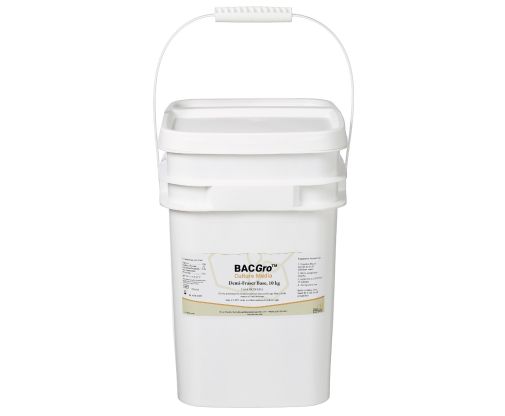The Listeria genus is ubiquitous in our environment, and while most species do not cause disease in humans, L. monocytogenes does pose a human health threat, especially in immunocompromised individuals and pregnant women. Listeria is commonly found in food manufacturing environments and outbreaks have been reported from many different food sources, including meats and dairy products. Listeria presents a challenge in food production environments because is able to grow in environments ranging from pH of 5.0 – 9.6 and at refrigerated temperatures.
Demi-Fraser Broth Base is the modified version of Fraser Broth Base and is used for the rapid detection of Listeria. A blend of casein peptone, enzymatic digest of animal tissue, beef extract, and yeast extract provide the nitrogen sources needed for growth, along with vitamins and minerals to support cellular function. Phosphate salts act as buffering agents, while sodium chloride maintains osmotic balance. Lithium Chloride, Nalidixic Acid, and Acriflavin provide the selectivity needed to grow Listeria. Notably, the concentrations of Nalidixic Acid and Acriflavin are reduced in comparison to Fraser Broth Base. Esculin contained within the medium is hydrolyzed by Listeria to aesculetin, which reacts with ferric ions from ferric ammonium citrate (added as a supplement) to produce a blackening of the medium.

